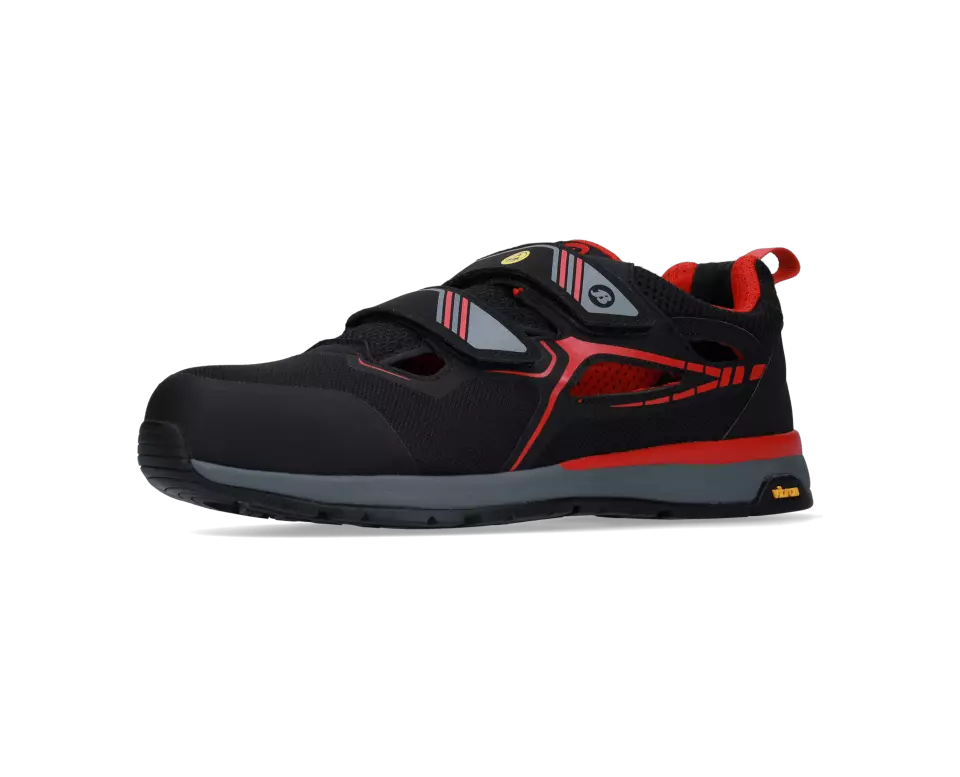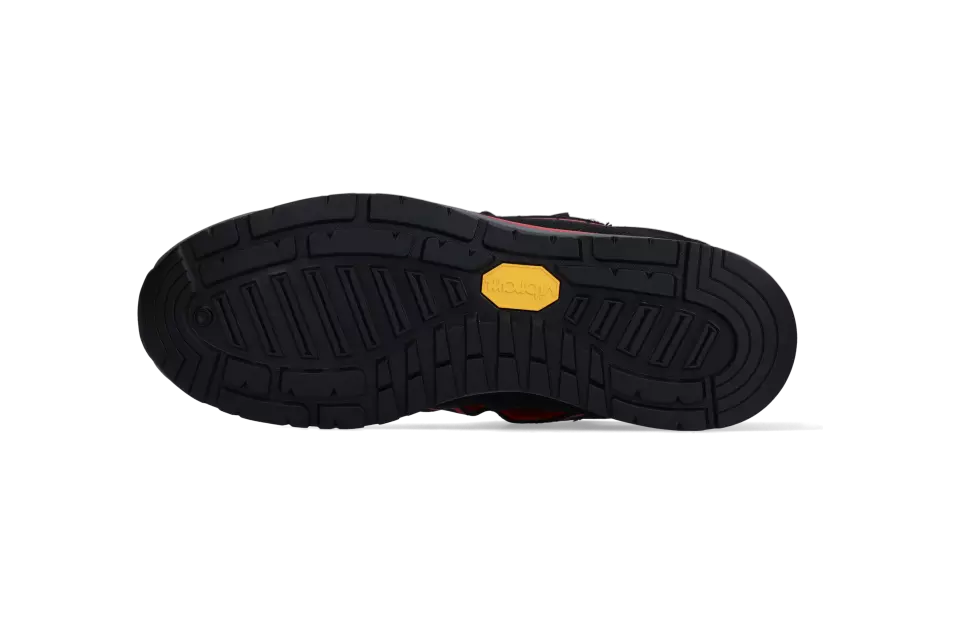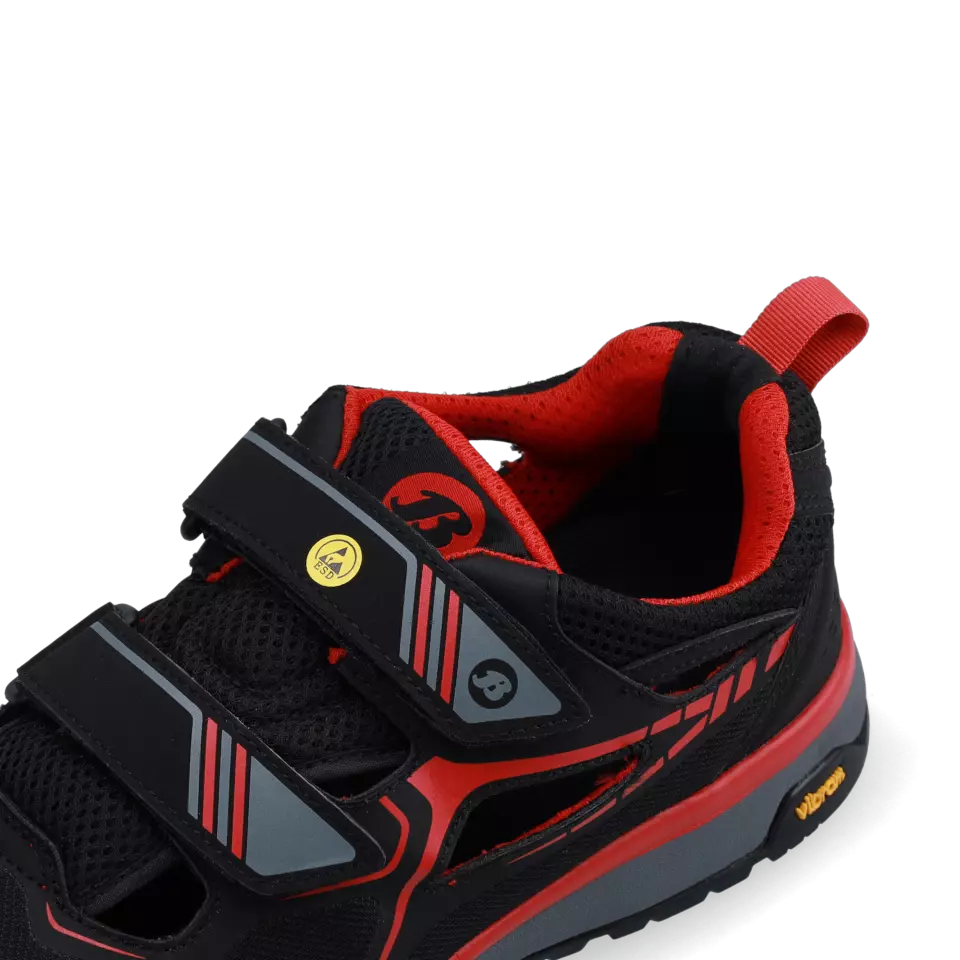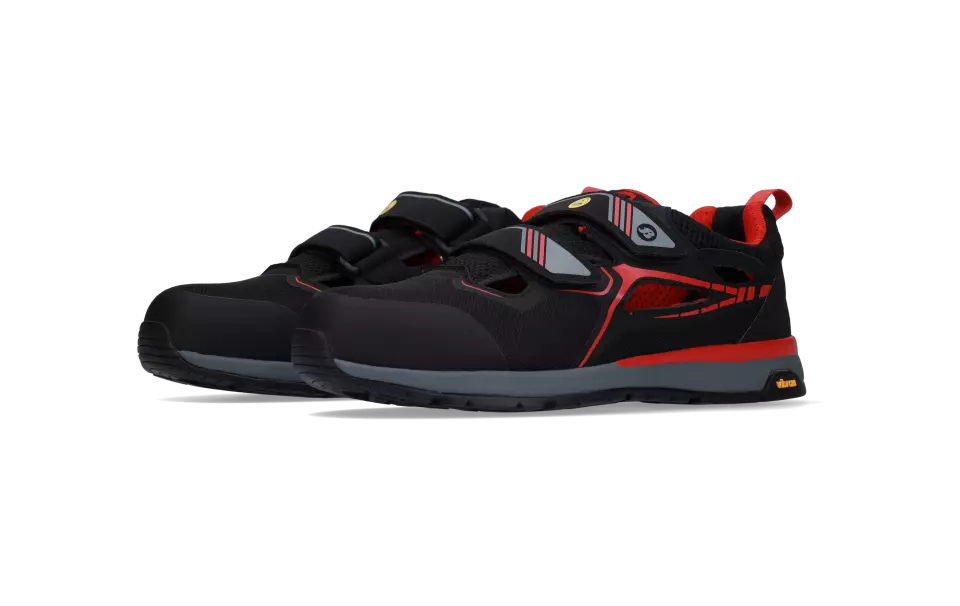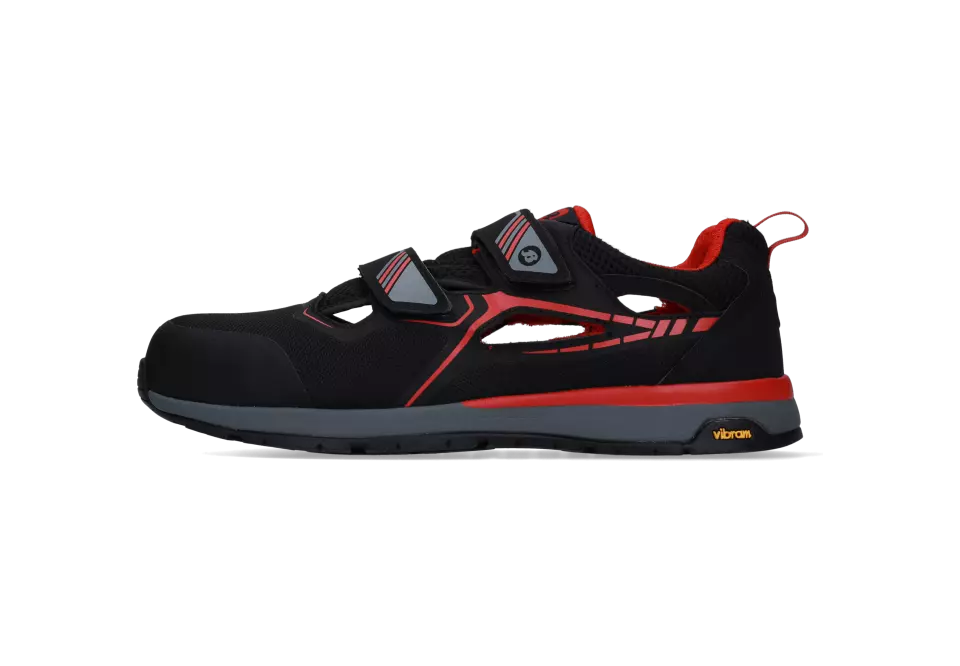Bata Industrials Radiance Flow Safety Shoes, S1P, Black
Bata Industrials
visit storeProduct description
The Bata Industrials Radiance Flow is an S1P-certified low-cut safety shoe in sneaker design. This lightweight shoe combines durable, wear-resistant textile with odor-inhibiting mesh lining for optimal wearing comfort. The innovative construction with EVA midsole, Vibram rubber outsole, and lateral BOA Fit System offers excellent safety features while maintaining high wearing comfort.
Product Features:
- Lightweight construction for fatigue-free working
- Slip-resistant SRC-certified sole for secure grip
- Enhanced breathability through special material combination
- Energy Return cushioning for improved wearing comfort
- Velcro fastening for easy on and off
- Metal-free construction
Technical Details:
- Upper material: Knitted fabric with TPU reinforcements
- Inner lining: Polyester mesh for optimal ventilation
- Sole construction: 3B-Motion technology with EVA midsole and Vibram rubber outsole
- Safety components: Composite toe cap and FlexGuard® composite penetration protection
- Heel area: Microfiber reinforcement for better support
- TPU toe cap for additional protection
Safety Features:
- ESD properties for protection against electrostatic discharge
- HI certification for heat insulation
- HRO-certified heat-resistant outsole
- FO certification for fuel and oil resistance
- EN ISO 20345:2011 certification
The material used to construct the shoe's bottom surface, affecting slip resistance, durability, chemical resistance, and comfort for different work environments.
The method used to secure the shoe to your foot, affecting how easy it is to put on and take off.
Indicates the level of protective features, from basic safety compliance to enhanced protection with additional guards and reinforcements.
The material used in the protective toe cap, determining the level of impact protection, weight, and suitability for different work environments.
Protect your feet from sharp objects and unseen hazards, giving you peace of mind on any job site.
Anti-slip soles provide superior grip, keeping you safe and steady on challenging surfaces.
Shock-absorbing soles provide cushioned comfort, reducing impact and foot fatigue for all-day wear.
Oil-resistant soles ensure secure footing and lasting durability in oily environments.
- Heat & Flame Resistance
- Slip Resistant
- Electrical Protection
- Impact Resistance
Request a free sample
Test first and buy later. Visit any product page to request your free sample.
Standards and labels
Test results
General Requirements HIThe General Requirements HI result in the standard EN ISO 20345:2011 indicates that the footwear has been evaluated for insulation against heat. This particular result implies that the footwear can offer a certain level of protection against heat, ensuring that the user's feet are insulated when exposed to high temperatures. The test for this requirement involves assessing the footwear's capacity to provide insulation from heat under controlled test conditions. Given the practical implications, this result suggests that the footwear is suitable for environments where exposure to heat is a significant factor, such as in foundries or steel mills, thereby safeguarding the wearer’s feet against thermal risks. This is crucial for procurement professionals when considering safety footwear for sectors where heat resistance is paramount, ensuring compliance with safety regulations and protective performance criteria.
General Requirements S1PThe EN ISO 20345:2011 standard sets the benchmark for safety footwear designed to protect users from injuries and accidents in diverse environments. The S1P designation under this standard refers to footwear that has 200 joules toe cap, fully enclosed heel, anti-static protection, energy absorption in the heel, and penetration resistant midsole. The test for the S1P requirement involves ensuring that the footwear has a resistant toe cap tested against a 200-joule impact, electrical resistance testing under defined conditions to confirm anti-static properties, and penetration resistance, where the sole is tested against a force of at least 1100 Newtons. Moreover, the heel region of the footwear is required to absorb energy, thereby reducing impact during wear. These criteria make EN ISO 20345:2011 S1P certified footwear ideal for environments where sharp objects, electric charge, and heavy impact risks are prevalent, thereby guaranteeing a high safety standard for wearers in such conditions.
General Requirements HROThe HRO result listed in the standard EN ISO 20345:2011 pertains to the heat resistance of the outsole of safety footwear. This test result confirms that the outsole is capable of withstanding exposure to high temperatures without degrading its physical properties and performance. The test method requires that the outsole of the footwear be exposed to 300°C for a minimum of 60 seconds under specified conditions, during which the outsole should not melt or crack, ensuring that it continues to provide protection against hot environments. Since the HRO classification attests to heat resistance, this feature is particularly important in industries such as metallurgy or construction, where contact with hot surfaces is a common hazard. Understanding this result can assist procurement professionals in sourcing appropriate safety footwear that meets the required durability and performance in high-temperature working conditions.
General Requirements CRThe standard EN ISO 20345:2011 encompasses general requirements for safety footwear to ensure they provide adequate protection in various occupational environments. Rating 'CR' signifies that the footwear has a cut resistant upper ensuring enhanced protection. The test method involves assessing the material's resistance to splitting or cracking under certain conditions, which simulates real-world industrial hazards involving sharp objects or surfaces. Practically, this result ensures that the footwear is suitable for environments where there is a risk of materials splitting or getting caught, thereby providing essential safety benefits to the user.
CE Marking is a label that shows a product meets certain safety and environmental standards set by the European Union. To get the CE Marking, a company must test and certify their product meets these standards. CE Marking is required for many products sold in the EU, including electronics, machinery, toys and medical devices. It helps ensure that products are safe for consumers and the environment, and allows for easy trade within the EU.
PPE stands for "personal protective equipment." PPE Category 2 refers to equipment that is more complex, and has a higher level of risk. Examples of PPE Category 2 include safety helmets, ear protection, and fall arrest equipment. In Europe, PPE Category 2 must meet certain safety standards set by the European Union, which means that it must be designed and manufactured to protect the user without causing harm. Companies that make or sell PPE must prove that it meets these standards. They also must have a quality management system in place and have to be audited regularly by a notified body.
Bata Industrials delivery terms
Free delivery when you order more than 150,00 € from Bata Industrials
Supplier shipping fee 6,33 €
Brand minimum 0,00 €
56,56 €
Shipping fee is 6,33 € for orders under 150,00 €
Sold in units of one pair
Need larger quantities?
Other products you may like
Recently viewed
Need help?
Get help from our experts
Other products you may like
Similar products you may like
Autonomous sourcing platform
The most efficient way to source and order supplies for your operations
Sourcing
Ordering
List products you’re looking for and we’ll find the best products and prices for you – all for free.
Need help?
Get help from our experts
